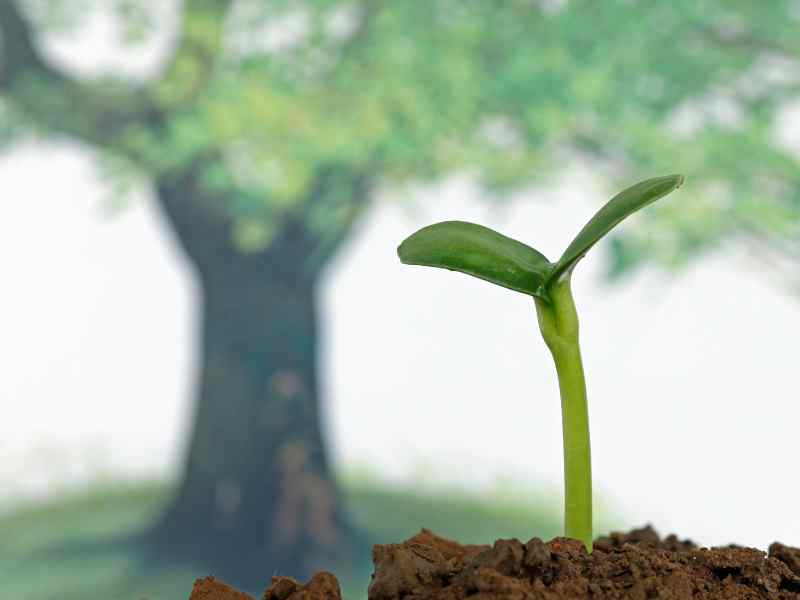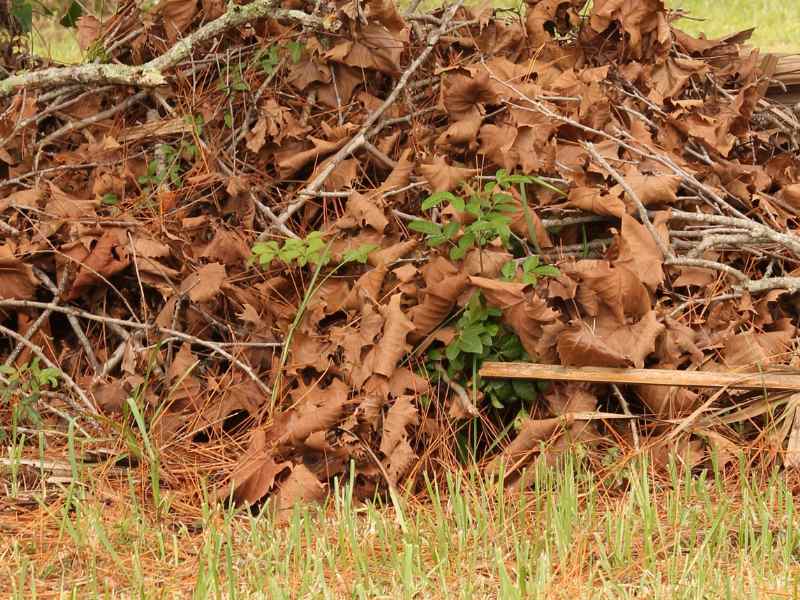Trees can be a tremendous benefit to a homestead in many ways, but one way that isn’t often considered is how trees can enhance soil quality. Trees are good for soil health for several reasons: Trees add organic matter to the soil, help prevent soil erosion, improve soil fertility, help maintain soil moisture, and promote beneficial soil organisms.

Overall, trees can play a critical role in maintaining soil health, which is important for the long-term productivity and sustainability of a homestead. How do trees accomplish this? Let’s dive in and find out.
Trees Can Be Nitrogen Fixers
Some trees fix nitrogen in the soil through a symbiotic relationship with nitrogen-fixing bacteria. These bacteria, typically belonging to the genus Rhizobia, form nodules on the roots of the tree and convert atmospheric nitrogen (N2) into a form that can be used by the tree (NH3).
This process, known as nitrogen fixation, helps to increase the nitrogen content of the soil, which is important for the growth and health of the tree and other plants in the surrounding area.
The tree provides a habitat and a source of energy (carbohydrates) for the nitrogen-fixing bacteria, while the bacteria provide the tree with a steady supply of nitrogen. This mutually beneficial relationship allows the tree to overcome the limiting factor of low nitrogen availability in the soil and contributes to the overall health and productivity of the ecosystem.
In permaculture, some common nitrogen-fixing trees include:
- Alnus (Alder)
- Caragana (Siberian Peashrub)
- Cladrastis (Yellowwood)
- Cercis (Redbud)
- Chamaecytisus (Tagasaste)
- Robinia (Black Locust)
- Glycine (Wisteria)
- Leucaena (Leucaena)
These trees are often used in permaculture systems as they not only provide nitrogen to the soil, but also provide food, fuel, and other ecosystem services. They can be integrated into food forests, agroforestry systems, and other regenerative landscapes to enhance soil fertility and promote biodiversity.
Trees Can Provide Biomass
Tree biomass refers to the total weight or mass of all the living and dead organic matter in a tree, including its stem, branches, leaves, roots, and other plant tissues. It is an important measure of the tree’s productivity, carbon sequestration potential, and ecosystem services.
Biomass can be measured and quantified in different ways, depending on the research question and the specific goals of the study. For example, aboveground biomass refers to the weight of all the organic matter above the ground, while belowground biomass refers to the weight of all the organic matter below the ground, including roots.

In forest ecosystems, tree biomass is an important factor in the carbon cycle, as it provides a long-term sink for atmospheric carbon dioxide (CO2). Trees absorb CO2 through photosynthesis and store it in their biomass, which helps to regulate the climate. In addition, tree biomass can be used for energy production, such as bioenergy or biofuels, which can help to reduce the use of fossil fuels.
Erosion Prevention
Trees help prevent soil erosion in several ways:
Root systems
Trees have extensive root systems that help to anchor the soil and prevent it from being washed away by rain or wind. The roots also help to absorb excess water and reduce runoff, which reduces the erosion potential.
Canopy
Trees provide shade and reduce the impact of rain on the soil surface, which helps to slow down runoff and reduce erosion.
Leaf litter
Trees produce fallen leaves and other organic matter that provides a protective layer on the soil surface, reducing the impact of raindrops and helping to slow down runoff.
Microclimate
Trees can create microclimates that influence the soil moisture and temperature, which can help to reduce erosion potential and promote healthy soil conditions.
Biodiversity
Trees help to create diverse ecosystems that support a range of plant and animal species. This biodiversity helps to stabilize the soil, reduce runoff, and prevent erosion.
Trees are an important component of sustainable land management practices, such as agroforestry, conservation agriculture, and reforestation.
By incorporating trees into the landscape, it is possible to reduce erosion and improve soil health, water quality, and biodiversity.

Water Retention
Trees provide shade, which can help with water retention in several ways:
Soil temperature
Trees reduce the amount of direct sunlight reaching the soil, which helps to keep the soil cooler and reduces evaporation. A cooler soil temperature can help to increase water retention and reduce the need for irrigation.
Evapotranspiration
Trees release moisture into the air through a process called evapotranspiration, which helps to increase the relative humidity and reduce evaporation from the soil surface.
Root systems
Trees have extensive root systems that help to absorb and store water, reducing runoff and increasing water retention in the soil.
Canopy
The canopy of trees can intercept rainfall and reduce runoff, allowing more water to soak into the soil and increasing water retention.
Leaf litter
Trees produce fallen leaves and other organic matter that provides a protective layer on the soil surface, reducing erosion and increasing water retention.
Trees can play an important role in water management and water conservation, especially in arid and semi-arid regions. By incorporating trees into the landscape, it is possible to reduce the need for irrigation, improve soil moisture, and enhance water quality.
Trees Can Promote Beneficial Soil Organisms
Trees can promote beneficial soil organisms in several ways:
Providing habitat
Trees provide a habitat for beneficial soil organisms, such as mycorrhizal fungi. These fungi form symbiotic relationships with tree roots, helping to improve soil structure, nutrient availability, and water-holding capacity.
Shedding leaves
As trees shed leaves, they provide organic matter to the soil. This organic matter feeds beneficial soil organisms and helps to improve soil structure and fertility.
Exuding nutrients
Trees exude nutrients from their roots, which can stimulate the growth of beneficial soil organisms. For example, trees exude sugars that can feed mycorrhizal fungi.
Creating microclimates
The shade provided by trees can create a cooler and moister microclimate, which can promote the growth of beneficial soil organisms. This is especially important in areas with hot, dry climates.
Supporting diverse plant communities
Trees can support diverse plant communities, which in turn support diverse soil microbial communities. A diverse soil microbial community can help to improve soil health and nutrient cycling.
Overall, by promoting the growth of beneficial soil organisms, trees can help to improve soil health, which is important for the long-term productivity and sustainability.
Trees can play a vital role in improving soil health and transforming your homestead. Not only do they provide shade, beauty, and a habitat for wildlife, but they also help prevent soil erosion, improve soil structure, and increase nutrient availability. By planting a variety of tree species and strategically integrating them into your landscape design, you can reap the many benefits of healthy and thriving soil.



